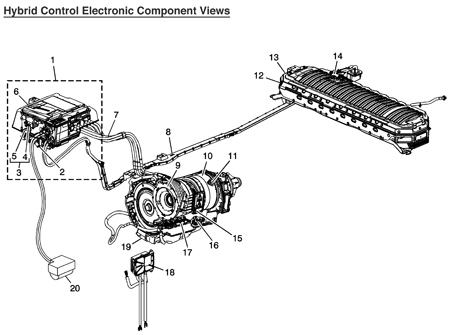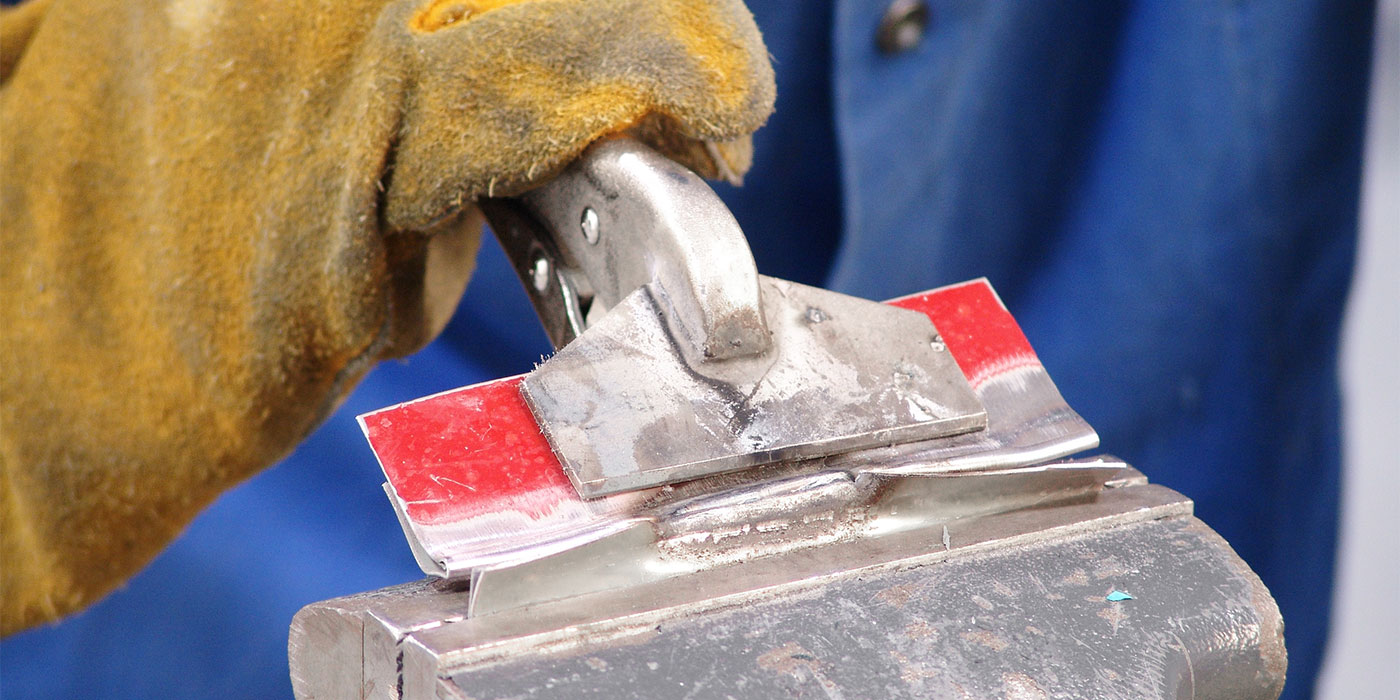 As vehicle manufacturers strive to meet or exceed fuel economy standards, alternative vehicle designs incorporating new materials and systems will be produced to accommodate consumer demand. One such vehicle that may roll into your collision repair facility is the 2008 Chevrolet Tahoe Hybrid.
As vehicle manufacturers strive to meet or exceed fuel economy standards, alternative vehicle designs incorporating new materials and systems will be produced to accommodate consumer demand. One such vehicle that may roll into your collision repair facility is the 2008 Chevrolet Tahoe Hybrid.
Questions will arise when this vehicle arrives:
• What safety precautions must we understand to properly evaluate and repair this vehicle?
• Are my technicians up-to-date on disabling procedures?
• Do I know where to find important documentation or procedures to perform repairs?
• How do I find repair processes to include in a repair plan that aren’t in my current estimating systems?
And many more questions will come up as hybrid vehicles aren’t going away any time soon. You need to be equipped to handle questions and concerns with accurate repair and information from the manufacturer.
Here are some safety precautions and unique operating characteristics of the 2008 Chevrolet Tahoe Hybrid.
Service Information
Always refer to ALLDATA for safety procedures, identification of material types, recommended refinish materials, removal and installation procedures. Always refer to General Motors for questions relating to applicable or non-applicable warranty repair information.
Safety Precautions
• To reduce the risk of severe shock and burns, treat the three-phase cables and connectors as though they’re energized until it can be verified that they aren’t.
• Any service to the hybrid system or any related component requires the removal of the key from the ignition. If the key is left in the “run” position, failure to remove the key from the ignition could cause the engine to auto-start. If the key is left in the “off” position, the 300V system could remain active. The first step to disable the high-voltage system is to remove the key from the ignition, which will open the contactors in the battery pack and begin the process of powering down the high-voltage system.
• To reduce the risk of severe burns or electrocution, always disable the 300V Energy Storage System interlock when servicing the vehicle. The interlock is located under the second row seat on the passenger side. To disconnect the interlock, pull up then out on the orange interlock module. Removing the interlock will keep the contactors inside the drive motor battery assembly from energizing the terminals.
• The hood ajar switch communicates whether the hood is open or closed. The engine won’t engage in auto-stop if the switch indicates that the hood is open. This ensures that the engine won’t auto-start unexpectedly when the vehicle is being serviced. If the ignition is in the “on” position and the vehicle is in auto-stop, the engine will restart automatically when the hood is opened.
Operating Characteristics
Drivers of the two-mode Hybrid Tahoe or Yukon will experience some operating characteristics that are unique to these vehicles. Due to the quiet nature of the Hybrid Drive system, certain sounds that may have been masked by the engine’s natural harmonics will be apparent. Among them is the electric engine cooling fan, the air conditioning compressor and the HVAC blower. In addition to those sounds, the drive motor battery assembly cooling fan, which sounds like the HVAC blower on low speed, may be heard from under the second row seat.
Other normal operating characteristics of the Tahoe Hybrid include:
• Key crank engine start sounds different. This is a normal characteristic of the vehicle. If the engine won’t crank, ensure that the 12-volt battery is sufficiently charged to allow for all of the hybrid control modules to “wake up” and initialize. The two-mode hybrid doesn’t use a conventional 12-volt starter – it uses one of the electric motors in the transmission to crank the engine that spins the engine faster than a 12-volt starter, resulting in a different than typical starting noise.
• Stall during shift out of park immediately following engine crank. This is a normal operating characteristic. Some drivers are able to interrupt the engine start sequence by shifting the transmission out of park. The ECM will turn off fuel and spark to the engine if it isn’t running and the transmission has been shifted out of park or neutral. Inform the customer to wait one to two seconds before shifting out of park or neutral to ensure that the engine is running and has completed the start sequence.
• Engine restarts in reverse from Auto Stop. This is a normal operating characteristic as the engine will restart any time the gear selector is in reverse. When reverse remains in electric mode, however, the engine restarts to provide an audible indication to pedestrians.
• Slight bump in driveline during acceleration. This is due to transition from V4 to V8 and vice versa. In Mode 2, the engine is able to operate longer in four-cylinder mode under light throttle for improved highway fuel economy. As more power is needed, the system will transition to V8 Mode. This is a normal operating characteristic of a hybrid powertrain to maximize fuel economy.
• Low pitch noise during Auto Stop. This is a normal characteristic operation of electric coolant pump or hybrid battery fan. During Auto Stop, the engine isn’t running and the interior cabin is quiet. These pumps run to keep the electronics from overheating, even in cold ambient temperatures. This noise may be more evident during high ambient interior temperatures. Advise the customer to keep the battery vents clear and not to carry cargo in the second row footwell area. The electric coolant pump runs in Auto Stop to circulate coolant to the HVAC system to maintain cabin temperature. That pump (under the right conditions) will run and may be barely audible.
• Tailgate hard to close. To improve fuel economy, the tailgate of the two-mode hybrid is made of aluminum, requiring more force to close and fully latch the tailgate.
• Cruise control resume operation. The hybrid system is optimized for the highest possible fuel economy. The two-mode hybrid vehicle resumes the previously set vehicle speed at a rate which provides maximum fuel economy.
• Brake pedal feel and brake pedal vibration. The two-mode hybrid system has a unique brake pedal feel due to the fact that the hydraulic system is not the lone provider of vehicle deceleration. The hybrid system blends in regenerative and hydraulic braking forces depending upon vehicle conditions. Over several braking events, the customer may perceive that he or she is applying a consistent brake force and yet the vehicle may decelerate at slightly different rates. This is a normal operating characteristic to maximize fuel economy. The two-mode hybrid vehicle utilizes a braking system that employs a high-speed electric motor/pump. Pump operation can sometimes be felt in the brake pedal as the system sometimes builds pressure. This is most noticeable to customers who start the vehicle with their foot on the brake pedal.
• 12-volt operation. In order to maintain peak capacity in the 12-volt system, it’s recommended that customers allow the vehicle to remain in “run” when parked and attended. When the ignition switch has been turned to crank and is set to “run,” the engine will run until the desired state of charge in the 300V battery has been reached. At that point, the vehicle will enter auto-stop mode, and the Accessory Power Module (APM) will continue to power the 12-volt system. Failing to allow the APM to power the 12-volt system could cause discharge of the 12-volt battery. Examples of activities that may cause stress on the 12-volt battery include: tailgate celebrations, usage of the rear seat entertainment system with the vehicle off or listening to the radio for extended periods of time with the vehicle off. In these situations, the recommended operating mode is to start the engine. Normally, the vehicle will enter Auto Stop mode and, as the 12-volt battery needs charging, the system will automatically start the engine to keep the system fully charged. In addition to allowing the APM to power the vehicle’s 12-volt system, special care should be taken when storing this vehicle. If the vehicle is to be stored for more than 20 days, the 12-volt battery should be disconnected. If the vehicle is to be stored for more than 60 days, the 12-volt battery should be charged to capacity no less than once every 20 days.
• Grind/growl in 4WD. On 4WD applications, the vehicle may experience a growl or gravel noise from the driveline momentarily during low-speed, low-RPM maneuvers. This is considered normal gear noise in the transmission.
• Whine sound during electric hybrid operation. In electric drive mode and reverse, the transmission can be heard as the vehicle moves. This is a normal operating characteristic.
• No brake assist (hard pedal) after disconnecting battery. Customers or technicians who are disconnecting the battery must wait for a period of at least one minute with the ignition in the “off” position without pausing at “accessory” and without applying the brake pedal prior to disconnecting the negative battery cable. These steps are necessary to allow the brake system pressure relief procedure to occur. Failure to follow these steps may result in warning lamps and/or DTCs being set pertaining to interruption of the pressure relief procedure. Other vehicle systems may also be affected by not allowing a one-minute duration for power-down.
Dan Espersen is the ALLDATA Collision Program Manager. He’s a Gold Pin Member of the Collision Industry Conference (CIC) and holds an AA Degree in Automotive Technology. He has 17 years of experience in the collision industry and 17 years of experience in the automotive industry.
© 2009 ALLDATA LLC. All rights reserved. All technical information, images and specifications are from the ALLDATA Product. ALLDATA is a registered trademark of ALLDATA LLC. All other marks are the property of their respective holders.













